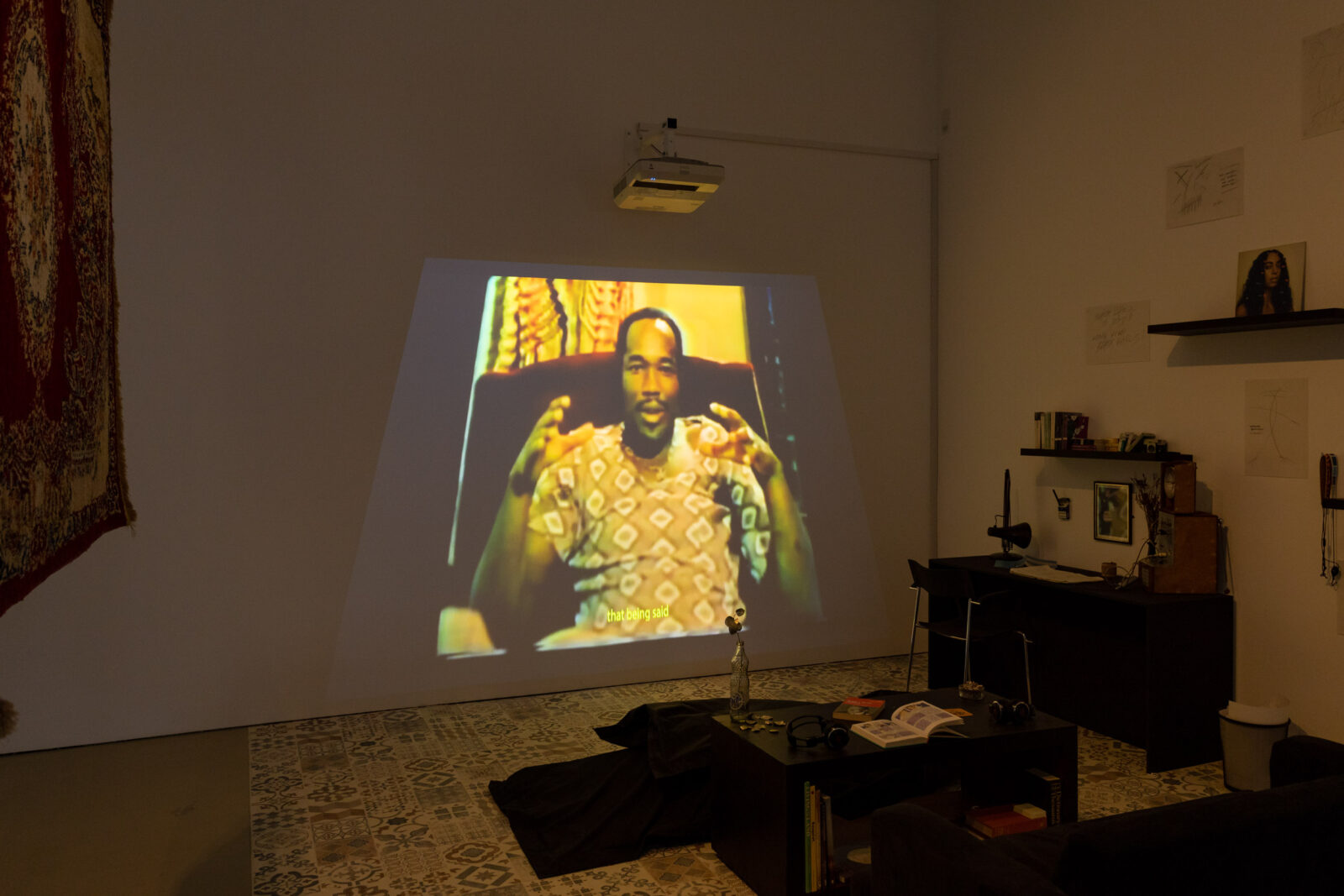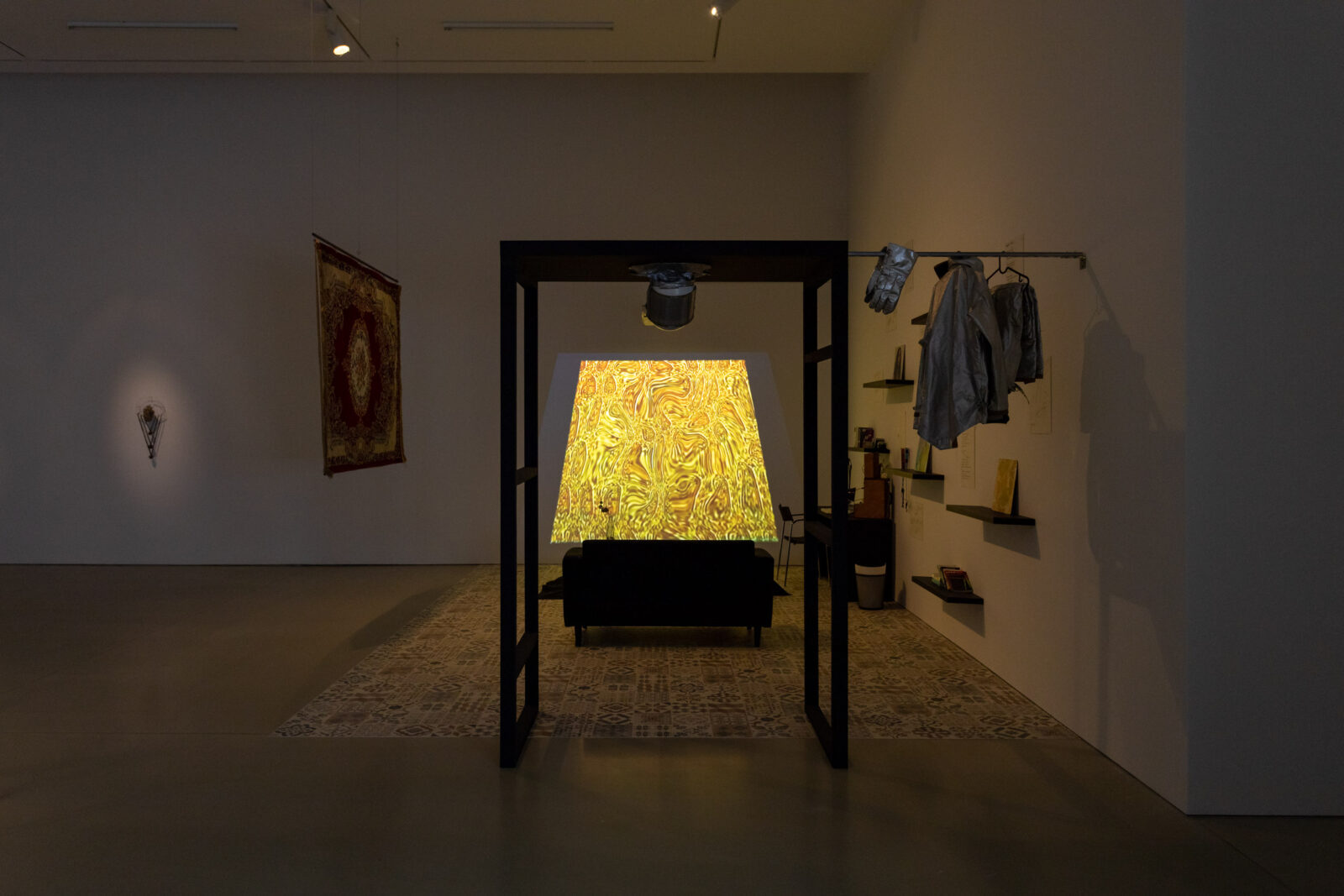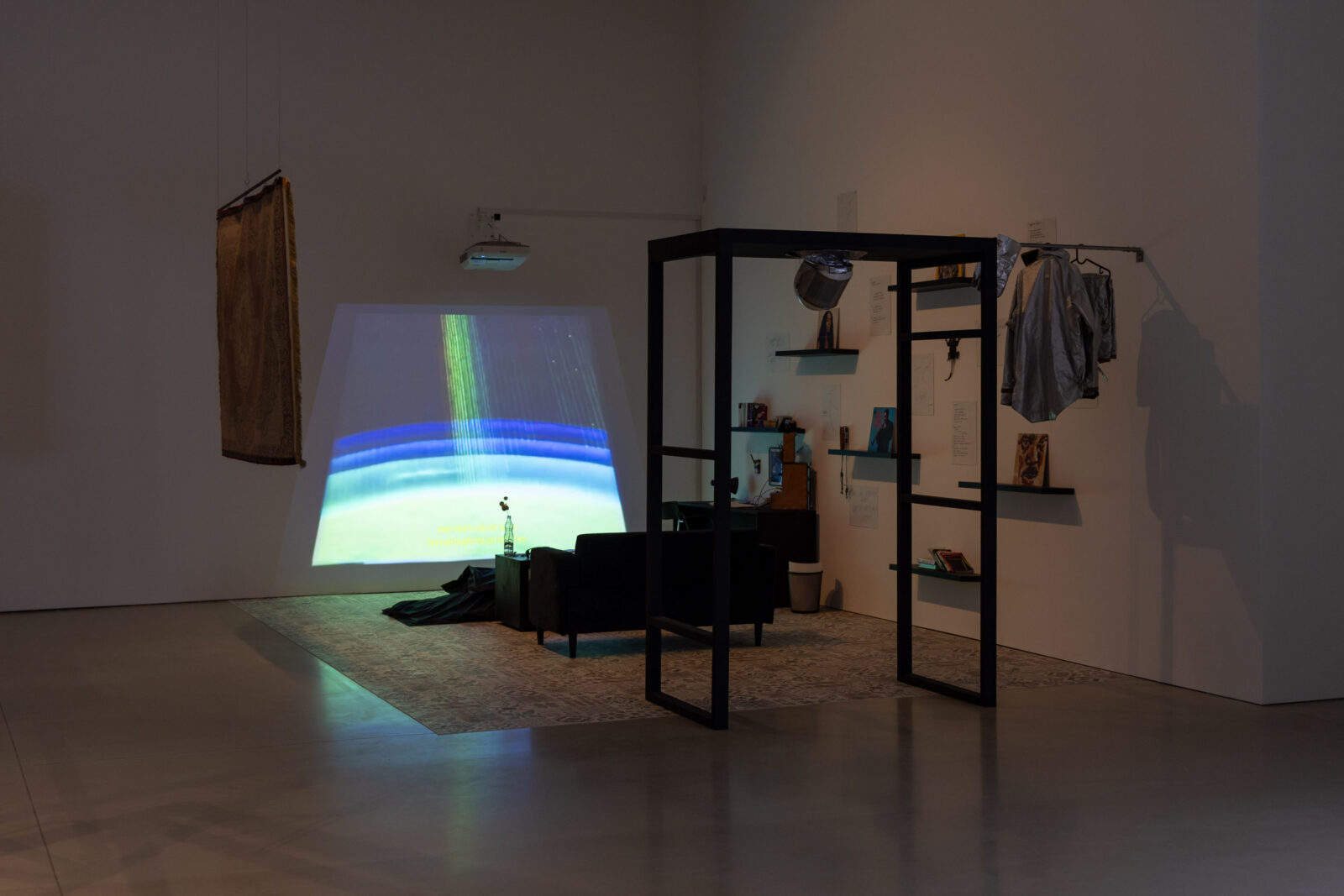Adebola Oyekanmi’s Black Icarus (2023) reimagines the Ancient Greek myth, mapping a new trajectory for its main character and subsequently producing an alternative conclusion – Oyekanmi’s tale is not cautionary, but emancipatory. Set in the year 2088, to commemorate the 111 year anniversary of the Voyager 2 spacecraft, the work is framed as an audiovisual journey toward the heart of a galaxy. The film’s visuals, found footage depicting everything from cosmic phenomena to deep sea creatures, are described as images and data sent back from the exploratory space probe as it, along with its predecessor Voyager 1, make their way to Sagittarius A*, a supermassive black hole at the centre of the Milky Way. The 65 minute film is set to the latest album of the same name from seigfried komidashi, the pseudonym Oyekanmi uses when he makes music. The songs, which feature collaborations with other artists like okcandice, Lester Prox, Special Projects alongside recordings of Maya Angelou, James Baldwin, Sun Ra and others. In creating Black Icarus, Oyekanmi, who works primarily as a musician, had the goal of creating space through music. He achieves this by extending beyond the film into the physical gallery space. He created a makeshift room at Site Gallery in which to view the work which is bordered by two walls, a rug suspended from the ceiling, and a wooden arch.
Oyekanmi tells me that the project began as an homage to The Odyssey. The artist was exploring the idea of journeys, nostalgia and the Greek word νόστος/nostos, which denotes a genre of Ancient Greek literature in which an epic hero returns home. These interests are reflected at the beginning of the film, which opens with a screen outlining the story of fictional Air Force Major Abacha Tunde. Tunde, who participated in a secret Soviet spaceflight in 1989 and remains stranded on the Salyut 6 space station since the dissolution of the Soviet Union in 1990. Major Tunde is simultaneously Icarus and Odysseus: he has reached the heavens in an act of defiance and ambition, but is thwarted in making his journey home, perhaps a punishment for his hubris. This predicament keeps Major Tunde stuck, not only from coming home, but in time – existing between past, present, and future.
This non-linear experience of time is felt throughout the film as timelines collide and fold in on themselves throughout Black Icarus’s four acts, each corresponding to Ancient Greek words. Through rich, multilayered symbolism, the film is an Afrofuturist voyage to investigate the core of Blackness. The first act, inspired by ἄλογος/algos, meaning pain, depicts a departure from earth. Grainy space race imagery showing footage of astronauts boarding spacecrafts, rockets launching, and views of earth from space dominate this section. The sound is a mix of various pasts, both painfully near and long gone. At one point Maya Angelou asks James Baldwin what it feels like to return from his “adopted home” in France to his “real home” in America. Baldwin responds that he misses his family, but expands to say that America is, “ not exactly my home. It’s a kind of asylum.” Soon after, poet lanaire aderemi’s recites an unsettling number of recent hashtags commemorating high profile cases black women who have died at the hands of racial violence. Then she asks, “Are we ever free when Black women are associated with anger and aggressiveness?’ When we are not allowed to be angry, because to be angry means to be dead?”. This section makes the case for a Black departure from earth, suggesting that staying often feels illogical.
The second act, which charts travel toward the black hole, is inspired by chaos. It begins with, seigfried komidashi reciting variations of the famous phrase “the revolution will not be televised”. His iterations include “ the revolution will not message first” and “the revolution will not be livestreamed on patreon to loyal subscribers”. The third act, which concludes with the arrival at and entry into the black hole, is mainly populated with images of deep space and celestial bodies. This act was inspired by νόστος/nostos, and suggests a return to ancient space time, the beginning of creation. At the point where the black hole has been entered, the images and text ripple with increasing intensity until they become incoherent abstractions, a concurrent death and rebirth transpires.
The final act, inspired by eidos/ειδος, which roughly means essence or form, feels like emerging from the depths of an ocean. Clips of alien deep sea flora and fauna are followed by more recognisable marine life. Eventually we surface. An archival image of Sheffield peeks through a quick succession of images, mostly brightly coloured shapes and lines. We have returned home from our great voyage, transformed. In the time we left, the world we once inhabited seems to have changed as well. The concluding music, instrumental jazz with a gentle, steady drumbeat, seems hopeful.
Words by Salena Barry
Images: Documentation images from Dark Echoes. Photos by: Jules Lister Photography, 2023.
About Platform:
Platform is an established artistic development programme at Site Gallery which allows artists to explore new ideas in a public space, testing new thinking and research with engaged audiences. It is funded and supported by the Freelands Artist Programme, a five-year programme that supports emerging artists across the UK in partnership with g39, Cardiff, PS2, Belfast and Talbot Rice Gallery, Edinburgh. For this edition, the exhibition was presented across Site Gallery, Yorkshire Artspace and Bloc Projects.




